Dream Possible
On the cold and dark morning of January 31, 2012, I made a second attempt at finishing the Arrowhead 135 snow ultra race. Beginning in the heart of International Falls, MN, it follows the Arrowhead snow mobile trail 135 miles to a finish line at Fortune Bay Casino near Tower, MN. International Falls consistently records the coldest temperatures in the United States, but like much of the country this year, it was plagued with balmy temperatures and minimal snow.
We queued up for the 7am start at the Kerry Ice Arena.
Sixty cyclists including four women, fifty on foot including eight women, and eight skiers. It is as dark as night at that time of the morning. Flashing red lights, the white light of head lamps and reflective material are everywhere.
With temperatures near 20F, it was a civilized morning. There is no fanfare at the start. Bikes have a very fast start. They are off first when race director Dave Pramann [a previous champion himself] says "GO".
Skiers line up and are off two minutes later and those of us on foot head out two minutes after the skiers.
The snow is minimal in depth, but adequate for every discipline. The trail is wide in town, enough for two or three people abreast. There are flashing lights as far as one can see out the trail. We are heading south. There is traffic control at intersections. Excitement and relief are felt as finally we are moving. All the weight of planning and decisions about gear are lifted.
I'm not sure where I am in relation to the other women on foot. It's not so much a competition with them, but with ourselves to make it 135 miles to Fortune Bay. We all have individual plans that we hope take us to the finish line. Some of us met at lunch the day before so we are familiar faces to each other. Participation of women is always less than 10%, but it is increasing.
At mile nine I see racers up ahead making the sharp left turn. There are no mile markers to check progress, just maps you can print and refer to. I ran this 9 1/2 mile stretch in 2 hours 10 minutes. Not bad with congestion at the start and slow snow. Heidi Perry passed as I took a quick nature break. I caught up to her and ran behind her for several miles. She was a machine of steady pace. Eventually I couldn't keep up and let her go. There is a long way ahead. Others on foot are around and we visit a bit. The company is nice. Parker Rios comes to my side. I met him in 2010 when he DNF'd at the MelGeorge halfway cabin. He is a champion ultra runner from Wisconsin, but pulling a pulk in snow is a different animal. I could tell he was disappointed that day two years ago.He was interested in my push-sled and wanted to give it a try. He handed me his poles and pushed my sled for a half mile. He was amazed how easy it was and said the weight of his pulk disappeared. I thought it was a good trade -- he pushed my sled while I carried his poles. Rules state that racers can help other racers, but cannot receive outside help.
I crossed Hwy 53, another landmark at mile 19, at 11:45. The Hwy 53 crossing always has race volunteers to make sure we are safe because of heavy traffic. It's also a good place for family and friends of racers to see how they are doing. This first leg of the race, 35 miles to the Gateway Store is the easiest because it is relatively flat, occurs in daylight and with the most people on the trail. I wished I was traveling a little faster, but I was feeling good. I passed Shelter 2 at mile 30 at 1:20pm. Shelters are three sided log buildings for people on snow machines to take a break. There are benches built into the walls, a fire ring and an outhouse. Sometimes there is a trash barrel.
Shortly after Shelter 2 I hooked up with Mike Lessard from Ray, MN. He said he was "a professional fisherman." Ray is a small town near the Gateway store. It's Mike's neighborhood and he knows most everyone associated with the race. He volunteered in previous races and was competing this year. He had a quick steady walking pace and I had to work to keep up. It's nice to hook up with local people who know landmarks on the trail. Mike works as a fishing guide and was personable and friendly. We got to Gateway together at 5:40pm. I was hoping to arrive before dark, but we were close. Mike's wife Susan met him there.
I learned from last year that Gateway is a gridlock of people and piles of clothes. Most people want to get out of their wet clothes, eat something, take care of minor irritations like sore spots on feet and generally enjoy the comforts of civilization before the long night ahead. Gateway store owners Phil and Ellen Hart do everything possible to help us continue. They use their personal clothes dryer for our wet things, make crocks of soup, set up chairs and trays for us to eat and answer all kinds of questions. They say it is the highlight of a long winter for them. I bought some apple juice that Phil heated on his home stove and poured it in my thermos. They do whatever they can for us. Heidi Perry arrived 30 minutes before me and was eating. Her husband and friend were with her. She looked happy and full of energy.
While eating in my corner next to the ice cream freezer, I talked to Rick Wagar, a teacher of some sort from North Dakota. He finished on foot last year and remembered me. There is a photograph of me last year crossing Elephant Lake just before I dropped out at MelGeorge's. I endured -35F overnight and was a moving mass of cold and ice. Rick said he uses that photo during a talk he gives to students. It was a wonderful turn of events this year to have temperatures above 0.
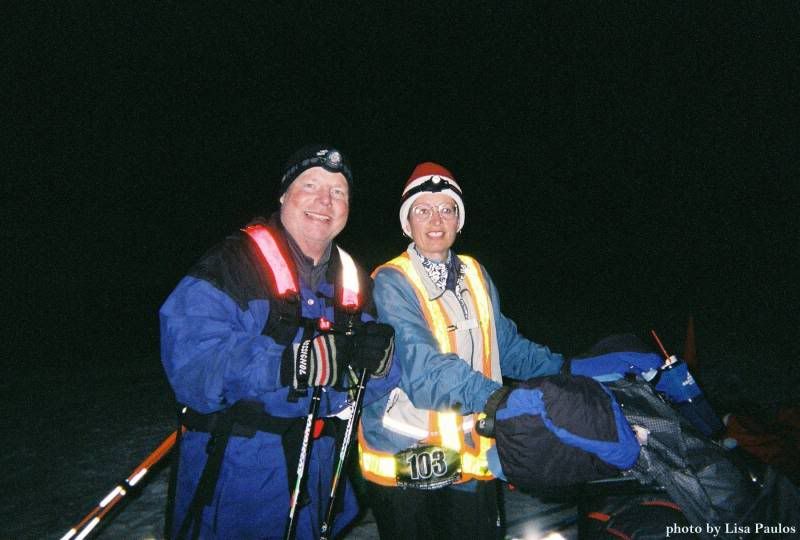
Mike and I left Gateway at 7:15p. The cutoff time is 9pm. I was surprised to see a number of people heading in as we were leaving. It was getting a little late. Angela Hill was in good spirits. It was nice to hear her voice.
The second leg of the race, ~35 miles from Gateway to MelGeorge's Resort on Elephant Lake is where the hills start. It's also dark much of the time for us on foot. Shelter 3 is 12 miles from Gateway and Shelter 4 is another 11 miles. Mike and I hoped to stay together and take a sleep break at Shelter 4. There were moderate and small hills. We passed people now and again, and a few people passed us. Volunteers on snow machines patrol the trail to check on us. They also have fires going at the shelters. They tow sleds [the kind hunters use to haul game out of the woods] behind in case a racer needs rescuing. I never want to find myself in need of the rescue sled. I saw people in them last year. Mike and I got separated and on one downhill it felt like I had a big chunk of ice under one of the skis on my sled. Something was digging into the snow and I stopped. Hmmm. Upon closer inspection I saw two screws from the frame were gone from the bracket on the ski. In just a few seconds, Erik ["one E and one K"] stopped to see what was going on. Thanks to a miracle, he picked up one of the screws in the snow. Other guys came upon us. After a little discussion, a guy from California produced a coil of wire and Rick Wagar had a wire tool. Temporary repair under the light of headlamps took just a few minutes.
There was wire in one side of the bracket and the screw Erik found in the other. "Racers can help other racers." Thanks Rick Wagar! "If you were a guy no one would even stop to help you" said the man from California. That comment stung a bit, but he did help me and I was back on the trail making progress. I had a few wrenches, but no replacement screws.
Mike caught up with me near Shelter 3, 48 miles at 12:20am. I could smell the fire before we got there. Three people were bivying in the shelter. The fire was going strong. A younger snow machine guy was there. I heard him ask someone "Why do you do this?"
We continued after a short break. There were four of us for a while. Me, Mike, Rick Wagar and Ben Clark, a 21 year old college student from North Dakota. This was Ben's third attempt to finish on foot. The previous two years he was stopped at MelGeorge's by race officials because of the time cut-off. He seemed determined to finish this year. Ben is quiet and thoughtful. His parents have accompanied him each year. He is majoring in math and computer science. Ben also had a good head lamp. We spent some pleasant miles together. He thought he should wait for Rick as I pressed on to Shelter 4.
I arrived ~4am and got into my sleeping bag as fast as possible. A few people were sleeping, while others came and went. People are always talking, so it was not a real sleep, but I rested and shut my eyes. I stashed some food in a pocket of the bivy sack. I ate most of it so I'd have energy to get going. Batteries Plus donated a "Nano Light" to all racers. I had the good idea to take it along. It's a tiny bright light that works perfect inside a sleeping bag. I thought I heard Mike's voice the whole time I was sleeping. I couldn't figure out why he wasn't getting some rest.
Around 6am I heard Angela Hill's voice. Angela has a presence that is distinctly her. It was great to know she made it to Shelter 4. I stuck my head out of the bag. It was time to get going. Angela was ready to quit. Things were not going well, so she called her mother from the trail, then she lost her phone. Someone brought it in the next minute. I tried to convince her to continue with me to MelGeorge's but she didn't have the aversion to the rescue sled that I do. Her decision was made so I asked if I could borrow her headlamp and have any extra food. She gave me a Coke, bottle of Ensure and the light. I guess racers helping other racers meant other people helping me. Mike was not around. I figured he left earlier with some other people. Thirteen miles to MelGeorge's. It's 6:30am Tuesday.
I'd stopped running since before Gateway. I figure I average 3 1/2 miles an hour with the sled and hills. Along the way I caught up to Ryan Anderson, 33, from Manitoba. He's a pleasant young guy who is a mortgage broker and life coach. His girl friend lives in the Twin Cities. He had foot problems since before Gateway. He was limping with blisters, but continued to move forward. These miles between Shelter 4 and MelGeorge's are where I really suffered last year. I didn't sleep at the shelter and got too cold, plus it was -35F that night. There are no landmarks and some huge hills.
We plugged along and came upon the cruel sign that says "Five Miles To MelGeorge's". I'm not sure if anyone has measured the distance, but it takes more than two hours and is much farther than five miles. You hope to see Elephant Lake around every corner, but it does not come.
I was troubled by the breakdown with my sled. I couldn't come to terms with a DNF due to mechanical problems. It is a risk I took when using the more complex push-sled rather than the simplicity of a pulk. I know people will voluntarily quit at MelGeorge. Perhaps I can borrow a pulk from someone. I'll look at my sled. I'd really like to finish with it, but mostly I want to finish without breaking any rules. I decide to continue with my sled and pull a pulk in addition, in case of complete failure. Finally the vast white expanse of the lake is in sight. There are thin pieces of wood at intervals in the snow with orange and reflective paint to guide us along the mile it takes to reach the oasis of MelGeorge's.
There is an ice fishing hut and vehicle on the lake. The lodge and cabins are not visible until you are almost upon them, but I remembered from last year where to look. There are two photographers on the lake. I'm in much better condition than last year, but weary. It's after 12 noon and the 2pm cutoff looms.
I have a few blisters on my feet, wet shoes and socks, mechanical issues and am tired. I find a little piece of floor space and claim it with my stuff. The cabin is full of people. Mary Grelk is happy to see me. I eat a grilled cheese sandwich from her. I get a few things from my drop bag. Racers are allowed to send a small bag of food to MelGeorge's for resupply. Only food. There's always lots of cast-off food that you can add to yours. I ask about borrowing a pulk. Lynn Saari isn't continuing on and she allows me to use her pulk and harness. John Storkamp produces a variety bag of gels.
He's not continuing either. Lynn and John are ultra royalty as far as I'm concerned. I've never met them, but see their names in race results. John is a several time Arrowhead champion. They both race a lot and put on races themselves. They don't know me, but don't hesitate to help me.
Mike makes it to the cabin shortly after me. Susan is helping him. With my distractions I forget to check out with the volunteer. Race director Mary Pramann strictly enforces the 2pm cutoff. You've got to be out of the cabin if you want to continue. Lynn sets me up with her pulk and I pull out of the MelGeorge's at 1:45. My feet are dry and I'm in good spirits. Alicia Hudelson looked great in the cabin and is ahead. Joy Parker is about 30 minutes ahead of me. There are two guys between us and two or three guys, including Mike, behind me. Everyone else has dropped, including front runner Heidi Perry.
There is a gentle hill just across the road where I realize I forgot to tell the volunteer the time I left the cabin. [This momentary lapse caused great angst and worry for my family and friends who were keeping track of my progress. They had to tough it out until I reached the teepee more than 18 hours later to see my time recorded that I passed through.] No time to fool around trying to get to my phone. I have less than four hours before it is dark again. Shelter 5 comes quickly in just two miles. I'm alone. The afternoon is nice. I see Greg, Joy's boyfriend at a cross road and she is ahead a short distance. I see her and am happy with my good fortune. We know each other from previous Arrowheads as volunteers. As I join her, Joy says she is having some breathing problems and coughing up green crud. She uses my inhaler [never let other people use your medication] but it doesn't help much.
We're walking together. It's a luxury to be with someone compatible. After a short time I look back to find her out of sight. Since leaving MelGeorge's I'm pushing my sled and pulling an empty pulk. I imagine it looks like a scene from the Far Side. I turn the whole dog-and-pony show around and walk a sort time until I see Joy. I will not abandon someone in distress on the trail. Shelter 6 is coming up and two miles beyond there is County Road 23 east of Orr. Greg will be there for her.
I continue on. It's 7:20pm when I get to Shelter 6, mile 86. It's dark and I am alone. The second half of the race offers few perks. The shelters are dark and empty. No fires are started for us. Time to man-up. All is well. As I approach the trail crossing at CR 23, I can see people standing around, a van with motor running parked at the side of the road and some volunteers on snow machines. From studying the maps, I was concerned about the upcoming 20-some miles. It appears there is no place to bail out. No cross roads or logging roads accessible to cars.
As I made my way to the road I could see race director Dave "you only have to average 2.3 mph to finish" Pramann with a clipboard and headlamp. My hunch was confirmed, there was no place to bail except the rescue sled. I was alone, tired and the warm van was waiting. I felt as though I was looking at the devil. "I guess I'll just have to make it then." I carried my sled across the road and took the trail into the abyss.
The hills were plentiful and there were pesky snow showers now and again. Since my head lamp gradually diminished to almost no light the night before, I learned to navigate using my two red flashing safety lights. After becoming proficient with that meager light, the harshness of Angela's headlamp seemed like a violation in the quiet darkness in the forest. I turned it on only for big downhills so I could see where to steer the sled as I hopped on the footpads on the back of the skis. It was difficult to see ahead at all when the snow fell. I made a cover for the food box from a discarded disposable hospital sheet. It was pliable like fabric, but with a water resistant finish. A thin coating of delicate flakes built up on everything several times during the night.
Around 10 or 11pm I started to get tired. I was miles from a shelter, so I pulled off to the side of the trail, put on my emergency down coat and set the kitchen timer for 15 minutes. I parked the push-sled in the snow and got inside the plastic pulk anchored behind. I didn't even have my eyes closed when I heard a snow machine. I didn't know it, but Todd Gabrielson had been keeping a close eye on me the entire race. He's been a race
volunteer for years and knows the entire Arrowhead Trail like the back of his hand. He approached the sled and started talking. "I'm back here" I said from the pulk. It was a very funny moment. I reassured him I was fine and just needed to close my eyes briefly. He took off and I was up and moving again in 5 minutes. I repeated this 5 minute nap in the pulk twice more.
I arrived as Shelter 7, mile 98, at 1:45am Wednesday. There was a shoveled path from the trail to it. I planned to nap for 30 minutes on the bench inside. I got in there and the benches were quite high off the ground. What gives? Are snow mobile drivers all 6 feet tall? I climb up there, set the timer and hope I don't fall off. It's heaven to close my eyes. I'm up in 15 minutes and back on the trail.
From 2am until sunrise at 7:30am I keep walking. Todd and our other snow machine safety volunteers sleep at the MelGeorge cabin. They don't patrol all night. I actually pass two people bivied on the trail. I delude myself that I'll be reaching the tepee, Check point #3, right before sunrise.
Someone passed me in the dark. He estimated it would take him 90 minutes to the tepee from where we are. He's moving quickly, especially on the downhills. He's perfected the technique for riding the pulk down hills. He has a single rope to his harness rather than rigid poles. I watch as he gives the rope one pull, the pulk slides beside him and he sits on his gear in time to ride down the hill. He steers and brakes with his feet. The maneuver happened so quickly. He was out of sight in no time. It reminded me of watching Lowell Kellogg at a cyclocross with his smooth technique off and on the bike.
Finally there are signs in the sky of morning emerging. The trail leaves the trees and moves into open grassy fields.
There is coarse grass sticking through the snow. I can see imprints of skis on the right side of the trail and foot and pulk prints in the middle. It's a welcome reminder that I am on course. There is no one else around, I don't see any animals or hear the snow machine volunteers. Finally, at 8:30 Wednesday morning I could see the teepee Check Point #3 at mile 110.
My good friend Dennis Grelk had been manning the station with Ed Bouffard for the entire race. Ed has a pulk and harness business at his home in Minnesota. Many racers on foot use his products. Dennis looked puzzled at me with the push-sled and pulk. He asked how I'm doing. "I'm starved! I'd eat anything besides a dog turd right now and that includes bacon and beef jerkey." [I'm vegetarian] I would have paid a high price for scrambled eggs and mashed potatoes with lots of butter.
The teepee is a no frills check point. No food provided, only water, hot and cold. Before leaving MelGeorge's I browsed the table of drop bag cast-offs and picked up a pack of Ramen Noodles. Dennis boiled some water for me on Ed's camp stove. I ate the warm noodles, and in what I thought was a brilliant idea, poured the beef broth into my thermos. I drank some hot cocoa and departed 45 minutes later in high spirits. Twenty five more miles and I had almost 10 hours.
In two miles I faced Wakemup hill, the last huge hill of the race.
It sure was steep. Like all the other big hills I looked for footholes in the snow from previous racers. I put my feet in them and pushed the sled up ahead of me. I wasn't fast, but I was steady and soon found myself at the top. Shelter 8 was there so I decided to take off the Adidas Adventure shoes and YakTrax I had on and put on my MukLuks.
My socks were soaked. With the felt liner in the Mukluks I could have dry bare feet for the remaining miles. The reality of my boots was they were frozen. I wore them during the first night from Gateway to MelGeorge's so my feet would stay warm. I couldn't budge the leather to get my foot in. I tried for at least 15 minutes. Wet feet for the duration.This final stretch of ~20 miles is mostly flat. It passes through swamp land until a mile from the Finish Line. I picked two cat tails in the first stage of exploding and stuck them on my sled. I wanted to run so I would be on the trail for less time, but I could only manage a slow jog for short stretches. Two guys passed me running slowly. Seven hours to go was a challenging thought. I looked at my final two maps and pondered the phrase "When the going gets tough, the tough get going." Todd Gabrielson, a snow machine volunteer checked on me. I just needed to keep a steady 2.5 mph and I'd make it. Seven hours was a long time yet and I needed to keep eating and drinking. Warmth comes from within. If you don't have fuel even the priciest heated gloves and techno clothing won't keep you warm. I took a swallow from the broth. It tasted horrible. Given the discussions about moose I heard over the last few days, I likened the taste to moose urine. I wasn't drinking any more of it, which left me with a Coke bottle filled with water. Nothing in my food box looked good. I had a few cheese cubes that I nibbled on. I don't remember what else I ate.
I kept up the pace. The scenery was uninteresting and monotonous. The trail is for public use but no one else was around. I kept looking for the County Road 115 that was on the map. I was getting sleepy as the day waned. I kept seeing footprints and pulk tracks on the trail. I was lonely and I remembered my two rules; No getting in the rescue sled and no tears at the Arrowhead. Ultra events require patience and I was nearing the edge. I called Dennis saying I might be lost. I just could not find that road to see where I was for mileage. He really didn't say much and I said I would continue on. In a few minutes Todd came by on the snow machine. He looked at the map. I wasn't even to the road crossing yet.
Seeing him and engaging in a few minutes of conversation was a lifeline. I kept moving forward, even willed myself to run a bit now and then. I so wanted to be to the finish line before dark. The vegetation was painfully boring. Snow on the scrubby trees and bushes started looking like people and vehicles. Mile after mile went by slowly. I kept up a reasonable pace. I was lonely. I felt like a prisoner on the swamp trail. There were twists and turns. I might be going in circles and not know it. There were no signs of life. It was mental torture after the fun at the teepee. I wasn't ending the race on a high note. I kept going. I would not finish by dark. I picked up a few pieces of trash here and there. Our goody bag contained a toothbrush which I threw in the food box. I got it out of the package, dunked it in the Coke bottle water and started brushing my teeth. Anything to take my mind off the boredom. The bottoms of my feet burned from the endless hours in wet socks. I kept walking as I entered the third evening of darkness. On went the headlamp just in case there was something or someone I wanted to see.
I think it is important to finish alone if that is where your place is among racers. People could walk out the trail from the finish line at Fortune Bay, but I'm glad they don't. When I finally got out of the swamp and onto the trail on the Fortune bay property, I tried to gather some piece of mind. I would be finished in 1.5 miles. The fourth official woman finisher on foot in eight years. This last leg of 20 miles was mental torture, but I showed myself that this time around, I was tougher than the Arrowhead. On I went to the finish banner where race officials, and friends waited to congratulate me. I had thirty minutes to spare.
Dream possible, it can happen.
Notes:The biggest thanks to Rick Paulos, my husband. He does lots of helpful things under the radar so I can make it happen at big events. We're a good team.
More thanks to Dennis, Duane and Mary Grelk for hauling me and my gear countless miles without putting any pressure or expectations on me.
Thanks to all the people who helped me along the way with winter camping, gear, and training. There was a lot of fun and learning. And thanks to the people who remained silent rather than tell me I couldn't do it.
There were some racers from Italy. One said the state slogan "Land of 10,000 lakes" should be changed to "Land of 10,000 hills."
I ran the biggest hills in my neighborhood for at least one hour once a week for a year. My quadriceps and hamstrings weren't a bit sore after the race.
Stats: I finished.
I needed more liquids. Gradually all the food I took looked un-appetizing, even the pie crust. I lost some of my sense of taste while on the trail. It took three days after the finish to return.
I learned this year that other racers and volunteers had nicknames for me: cart lady, bag lady, metronome.
It cost $400 to take a cab from Duluth MN to the Fortune Bay Casino.
More stats: 50 people started the Foot division, 42 male and 8 female. 28 people finished the Foot division, 26 male and 2 female. 62% males finished. 25% females finished. 56% overall finishers
It was me and nature, as Dave Pramann wanted, the second night. No music or distractions. Just hours of darkness, trees, occasional snow, thoughts and forward progress.
In a complete reversal of roles, Jennifer Flynn covered me with the bedspread when I fell asleep with my clothes on after finishing. I did the same for her last year.
The vision of Dennis loading my baggage into the van "like he's chucking hay" for the return home.
Boots are kept warm during sleep breaks by wearing them inside the sleeping bag.
There are 7 grams of saturated fat in one Hostess Twinkie.
I didn't weigh my sled, but I could easily lift it when there were road crossings with no snow.
All time finishers in the women foot/run division:
2007 Sarah Lowell 55:07
2012 Alicia Hudleson 55:56 (third time is the charm)
2008 Sarah Lowell 56:44 (only two time woman finisher on foot)
2011 Barb Owen 57:38 (Shackelton Award winner)
2012 Lisa Paulos 59:29 (second attempt)
2008 Michelle Santihano 60:43 ("Unofficial finisher" outside the time limit)
The most minimal hug from Dennis in my driveway after my gear was unloaded at home. Enough said.
Dream achieved.
Iowa Ultra Queen


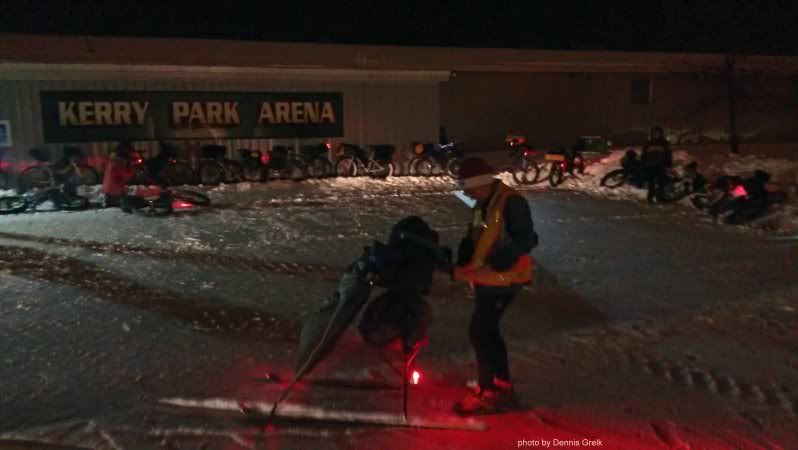
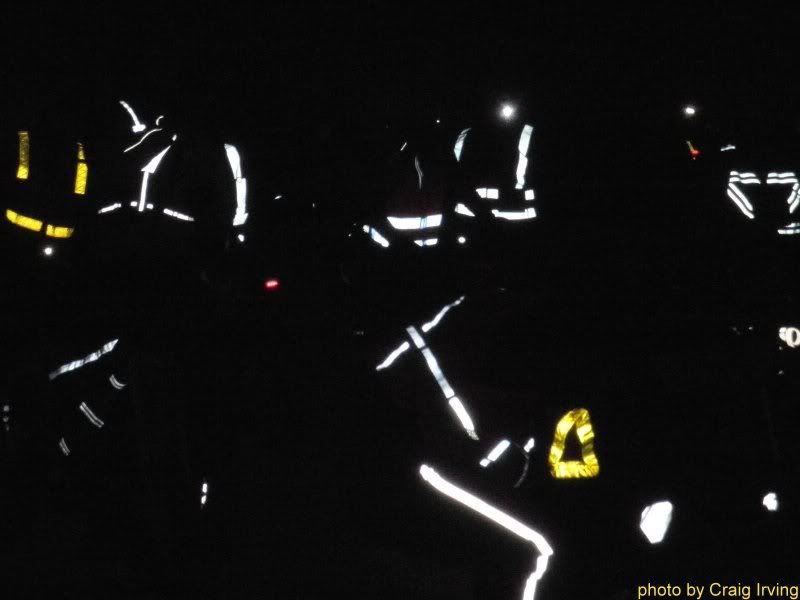
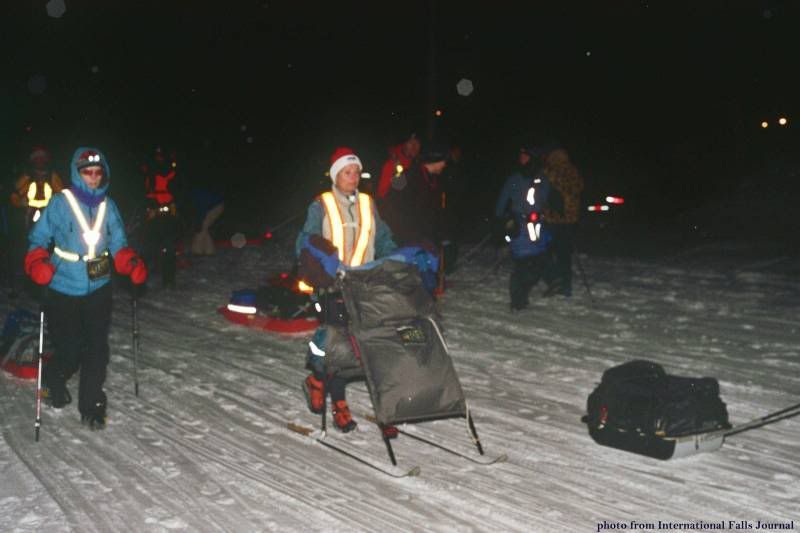
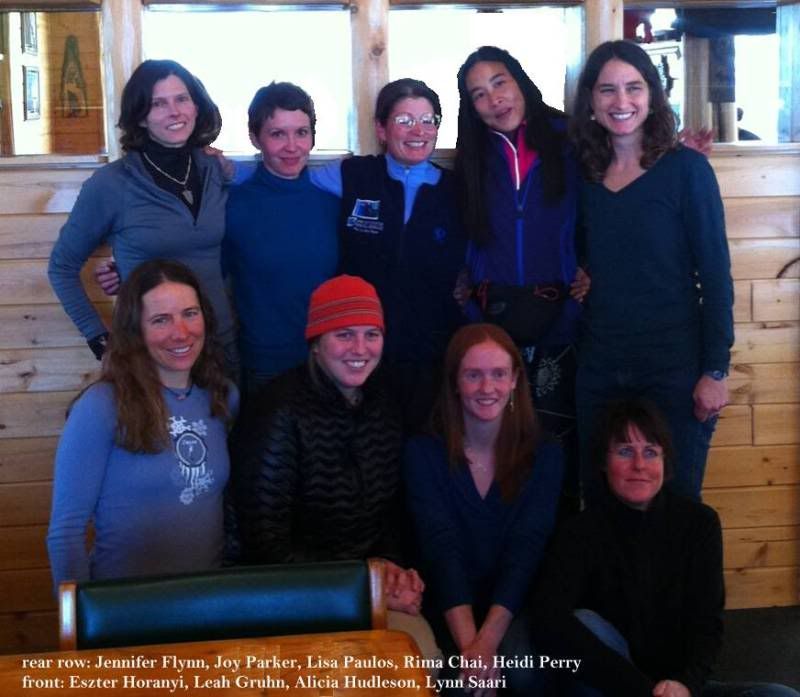
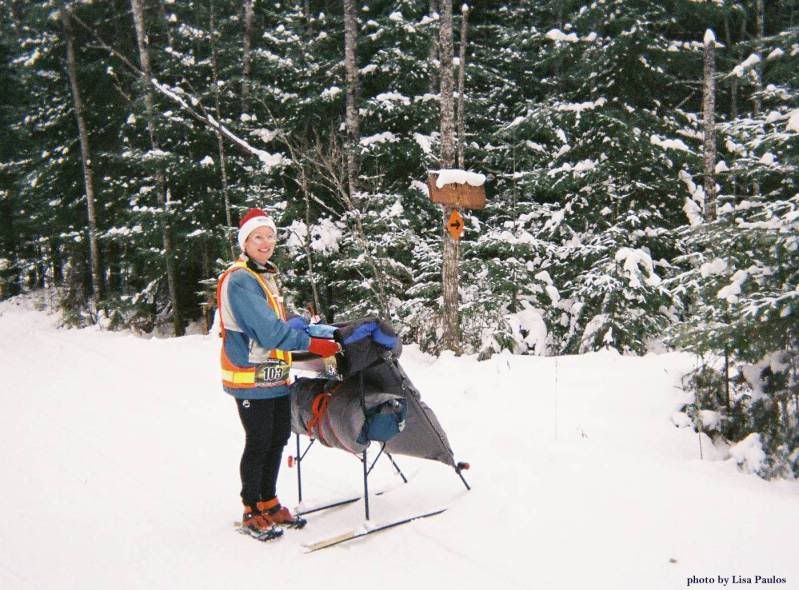
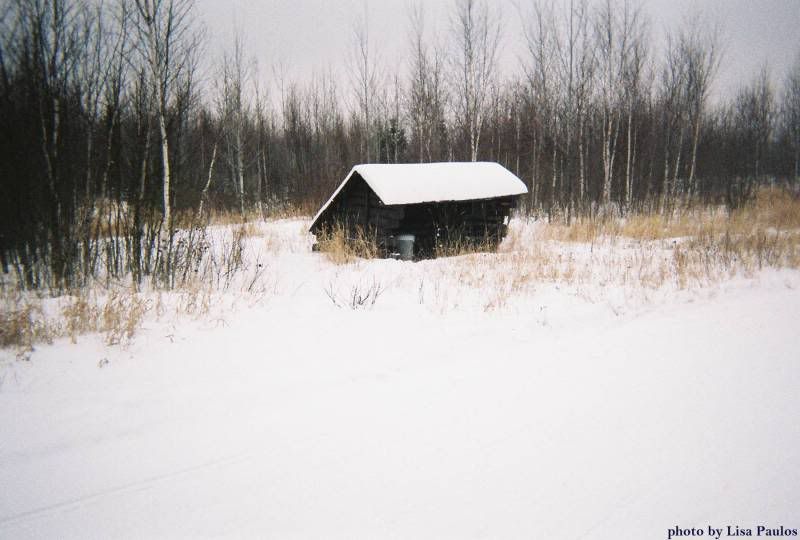


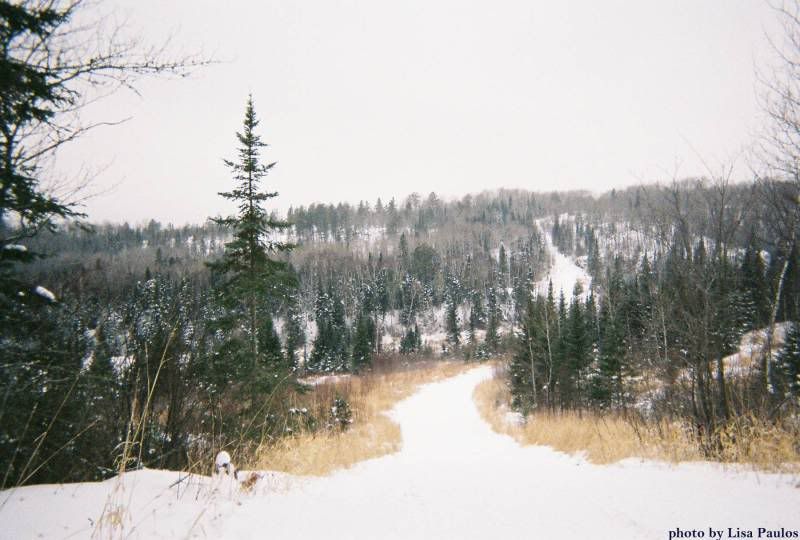

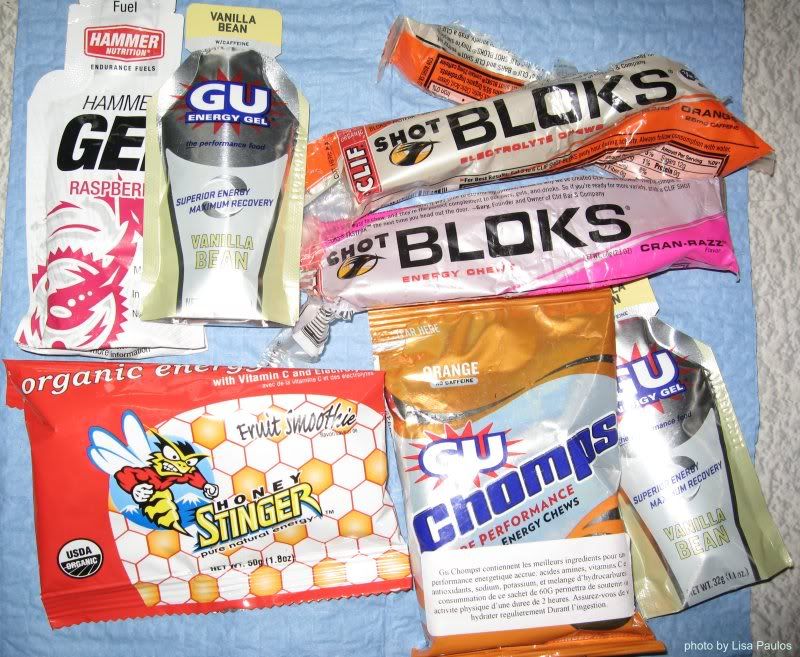

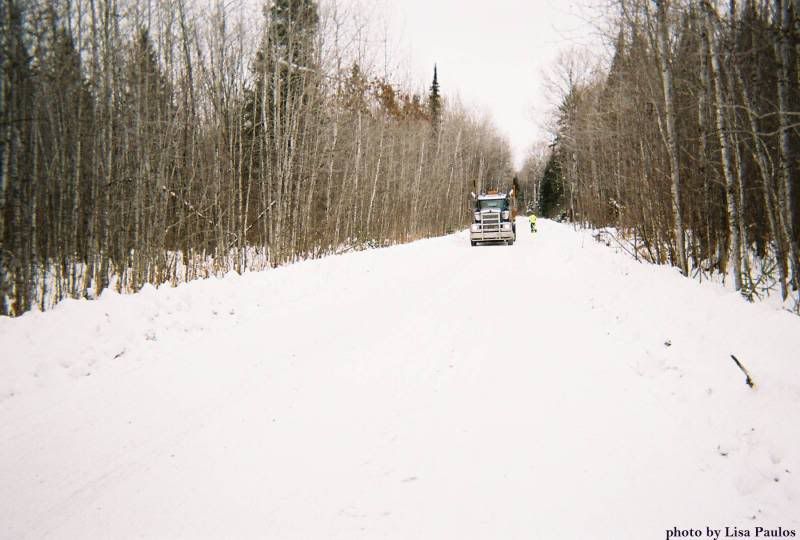

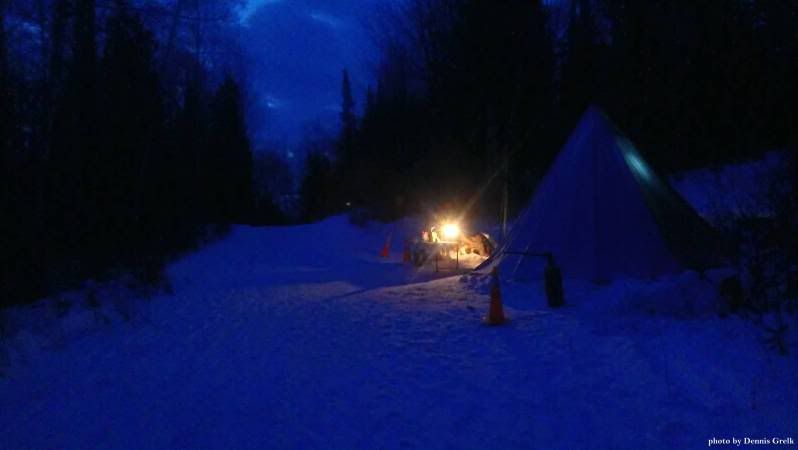


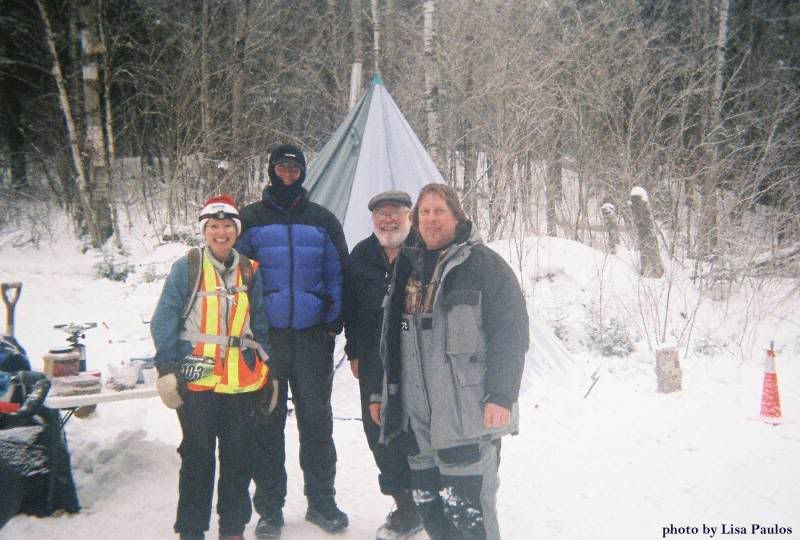

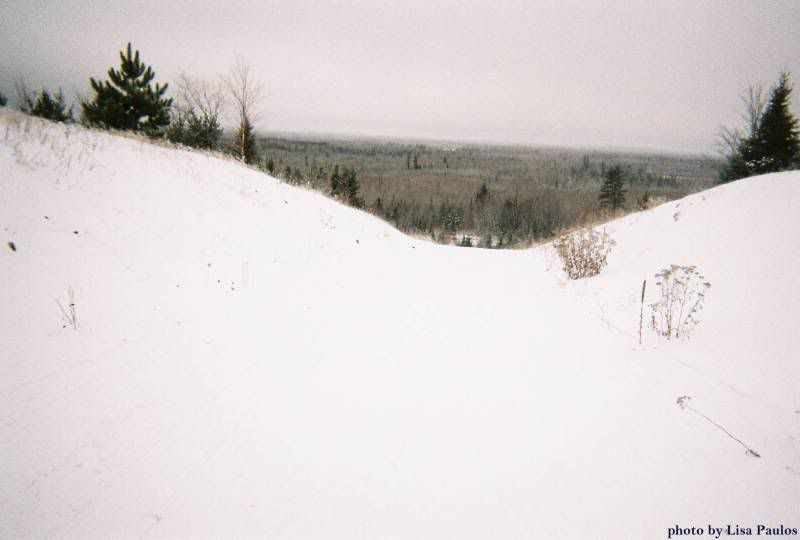

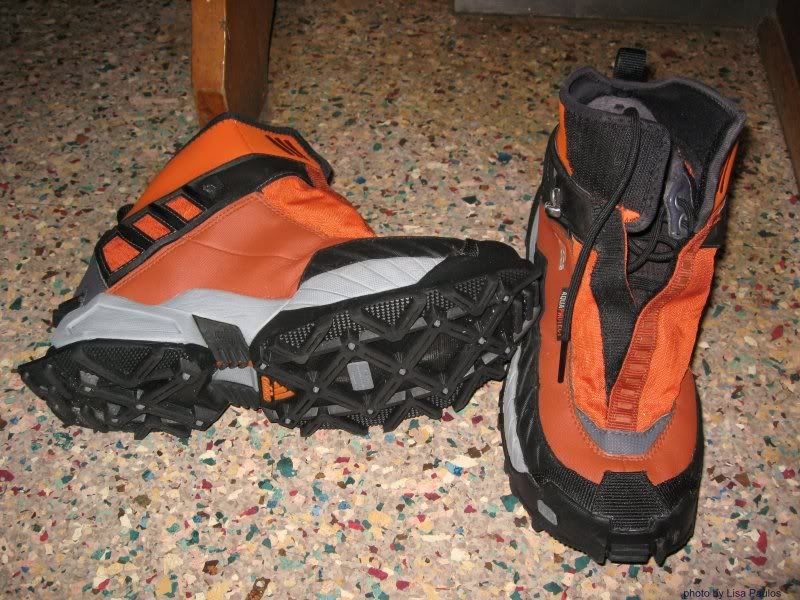

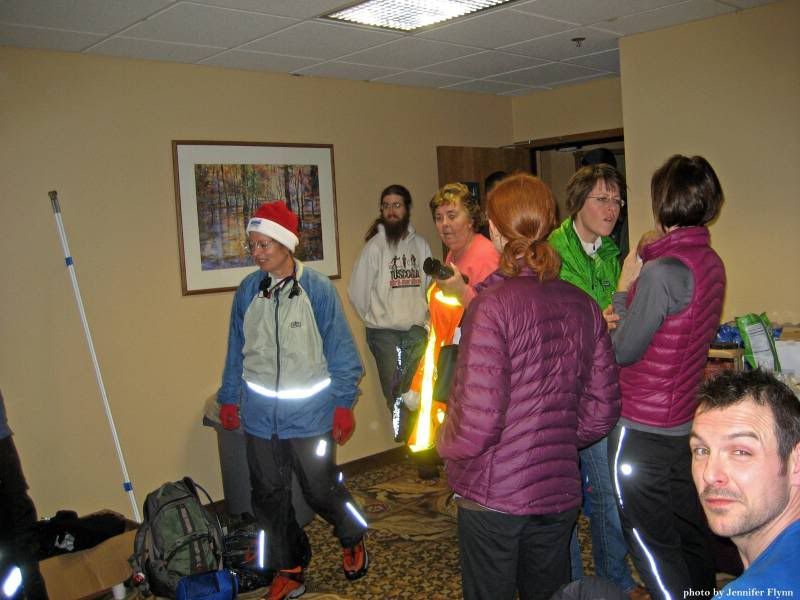
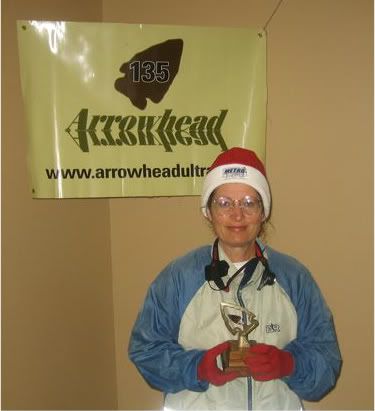


Congratulations again! 135 miles is a long way.
ReplyDelete"If you were a guy no one would even stop to help you" I have to disagree with this. I broke my chain at one point this year and someone did stop and ask if I needed help. I didn't, but it was nice to know that he was willing.
Lisa... That was a great read and an even greater accomplishment. I look forward to the in person stories.
ReplyDeleteJeff C
This is awesome!!! Can't even express how impressed I am. Amazing.
ReplyDeleteLisa great write up and beautiful photos. You are an inspiration. May us that do what we do, keep on doing what we do.
ReplyDeleteI finally got a chance to read all about your adventure. Impressive! Makes my 2012 goal of running a marathon seem not so difficult. It's great to have goals even as we get older. See you.
ReplyDeleteLandon